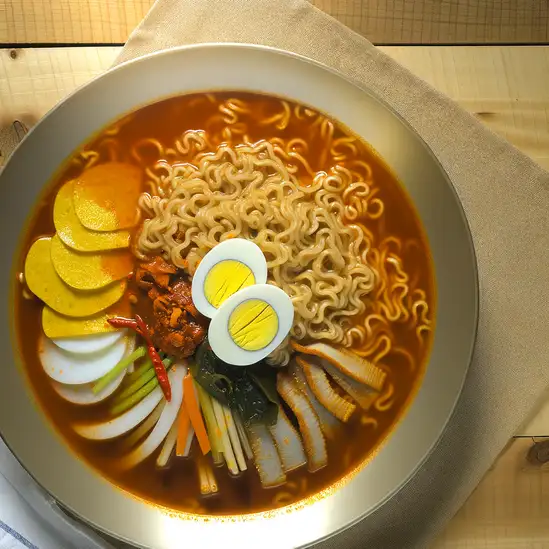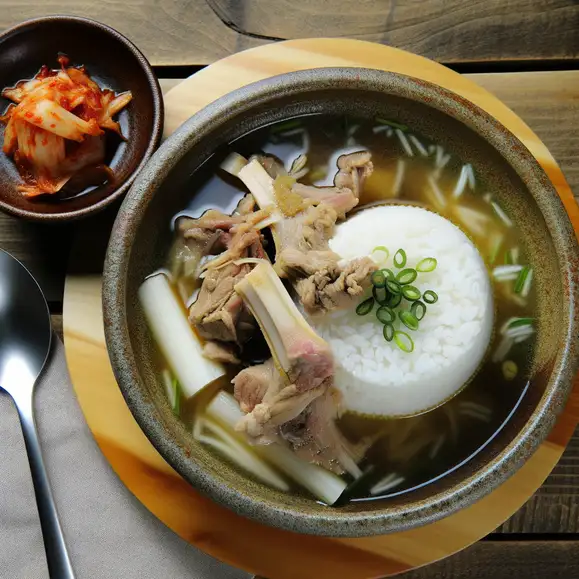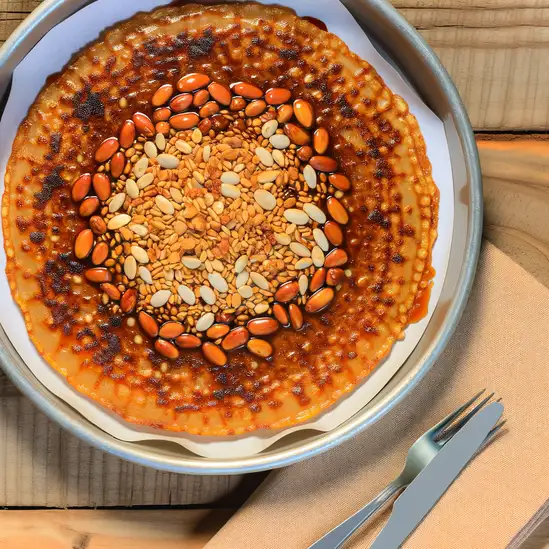


If you’ve never been to Busan,imagine a city where the ocean breeze carries the scent of salty waves mixed with sizzling street food,and the skyline is a lively patchwork of modern skyscrapers and colorful fishing boats bobbing in the harbor. That’s Busan — a place that feels both vibrant and laid-back at the same time. Walking along Haeundae Beach,you’ll hear the laughter of families and the distant hum of live music from nearby cafes,while the sun warms your skin and the cool sea spray refreshes you. It’s a city that pulses with life but never rushes you. What really makes Busan stand out is its blend of urban energy and natural beauty. You can start your day exploring the bustling Jagalchi Fish Market,where vendors shout out their freshest catches and the air is thick with the aroma of grilled seafood. Later,wander through Gamcheon Culture Village,a maze of brightly painted houses and quirky art installations that feel like stepping into a living canvas. The city’s character is deeply tied to the sea,and you can taste that in every bite of spicy,tangy kimchi jjigae or fresh hoe (Korean sashimi) served with a side of soju. Busan’s warmth isn’t just in its weather but in its people — friendly,welcoming,and proud of their city’s unique charm. Whether you’re hiking up to the peaceful Haedong Yonggungsa Temple perched on the cliffs or catching a film at the famous Busan International Film Festival,you’ll find moments that surprise and delight. It’s a city that invites you to slow down,breathe in the salty air,and soak up a culture that’s as rich and layered as the waves rolling onto its shores.
The information on this page is currently being reviewed by Tripkliq and should be used as a guide only
Eng word: Hello
Eng pronunciation: annyeonghaseyo
Local language: 안녕하세요
Eng word: Goodbye
Eng pronunciation: annyeonghi gaseyo
Local language: 안녕히 가세요
Eng word: Thank you
Eng pronunciation: gamsahamnida
Local language: 감사합니다
Eng word: How much
Eng pronunciation: eolmayeyo
Local language: 얼마예요
Eng word: Toilet
Eng pronunciation: hwajangsil
Local language: 화장실
Eng word: Help me
Eng pronunciation: dowajuseyo
Local language: 도와주세요
Eng word: Yes
Eng pronunciation: ne
Local language: 네
Eng word: No
Eng pronunciation: aniyo
Local language: 아니요
Eng word: Excuse me
Eng pronunciation: sillyehamnida
Local language: 실례합니다
Busan, initially known as Geochilsanguk during the Samhan confederacies, has been a significant port city since ancient times, officially becoming a major trade port with Japan during the Joseon Dynasty in 1407.
During the Korean War, Busan served as a temporary capital of South Korea, from 1950 until the war's end in 1953. It was the only major South Korean city to avoid capture by the North Korean army.
Jagalchi Fish Market, South Korea's largest seafood market, represents the heart of Busan's maritime culture. It was established by women peddlers during the Korean War and has since become a bustling center of trade and tourism.
The only United Nations cemetery in the world is located in Busan. It was established to honor the UN soldiers from 16 countries who died during the Korean War.
Busan Port is one of the world's busiest shipping ports, serving as a logistical hub in Northeast Asia. Its development has been pivotal in South Korea's rapid industrialization and economic growth.
Started in 1996, the Busan International Film Festival (BIFF) has grown to become one of Asia's most significant film festivals, highlighting Busan's role in the global film industry and cultural landscape.
Founded in 678 during the Silla Dynasty, Beomeosa Temple is one of Korea's most important Buddhist temples. Situated on the slopes of Geumjeongsan Mountain, it's a serene cultural site surrounded by beautiful natural scenery.
The Busan Modern History Museum, located in the former Oriental Development Company building, details the city's modern-era transformation and its crucial role in Korea's struggle for independence and modernization.
Completed in 2002, the Gwangan Bridge, also known as the Diamond Bridge, spans over Busan's coastline, offering dramatic night views and serving as a vital link between Haeundae district and the rest of the city.
In Busan, the most common Power Adaptor is Type C, Type F.



Milmyeon is a cold and spicy noodle dish that is popular in Busan. The noodles are made from wheat flour and starch, and are served in a tangy and spicy broth with vegetables and sometimes slices of boiled egg or meat.

Dwaeji Gukbap is a pork soup with rice dish that is a favorite among locals in Busan. The soup is made with pork bones and meat, and is served with a bowl of rice. It is often garnished with green onions and kimchi for added flavor.

Ssiat Hotteok is a popular street food in Busan. It is a sweet pancake filled with a mixture of brown sugar, honey, peanuts, and sunflower seeds. The pancake is fried until crispy on the outside and gooey on the inside, making it a delicious treat for those with a sweet tooth.
Imagine stepping into a place where the ocean breeze carries the scent of salty waves and blooming camellias,and the landscape feels like a living painting. That’s Jeju-si for you—a city that hums with a laid-back energy,yet pulses with stories rooted deep in volcanic soil. Walking through its streets,you’ll notice the soft crunch of volcanic rock underfoot and the gentle chatter of locals who wear their island pride like a warm shawl. It’s a place where nature and culture blend seamlessly,from the rugged cliffs that plunge into turquoise waters to the quaint markets bursting with fresh seafood and sweet tangerines.
Jeju-si’s charm lies in its contrasts. You can start your day wandering through the vibrant Dongmun Market,tasting freshly grilled abalone or chewy hallabong oranges,then lose yourself in the serene beauty of the nearby Olle Trails,where the wind whispers through pine forests and the distant call of seabirds accompanies your steps. The city’s unique heritage,shaped by its island isolation,is visible in the traditional stone houses and the heartfelt stories of haenyeo—female divers who harvest the sea’s bounty with incredible skill and bravery.
What really stays with you is the city’s rhythm:unhurried yet alive,peaceful yet full of surprises. Whether you’re sipping a cup of locally brewed green tea while watching the sun dip behind Hallasan Mountain or chatting with a friendly vendor about the best hidden spots,Jeju-si invites you to slow down,breathe deeply,and soak in a world that feels both timeless and refreshingly new.
Seoul feels like a city that’s constantly humming with life,where ancient traditions and cutting-edge modernity dance side by side. Imagine wandering through narrow alleys lined with hanok houses,their wooden beams glowing softly in the afternoon sun,then stepping out into bustling streets filled with neon signs and the irresistible aroma of sizzling street food. The city’s energy is contagious—there’s a rhythm to it,from the chatter of locals bargaining at markets to the steady beat of K-pop spilling out of cafes.
What really sticks with you is how Seoul engages all your senses. You’ll hear the clatter of chopsticks and laughter at a late-night pojangmacha (street food tent),smell the sweet,smoky scent of grilled meat mingling with spicy kimchi,and feel the crisp breeze along the Han River as joggers and families enjoy the parks. The city’s layers reveal themselves slowly—ancient palaces tucked between skyscrapers,tranquil temples offering quiet moments amid the urban rush.
Seoul’s character is a blend of warmth and innovation. People are friendly and proud of their culture,eager to share stories over a cup of rich,bitter coffee or a bowl of comforting bibimbap. Whether you’re exploring art galleries in trendy neighborhoods like Hongdae or soaking in the panoramic views from Namsan Tower,there’s a genuine pulse here that invites you to dive deeper,to taste,listen,and truly feel the city’s soul.
If you ever find yourself in South Korea,don’t just rush through Incheon—it’s a city that quietly hums with a unique energy,blending the buzz of a modern port city with pockets of serene charm. The moment you step out,you’ll notice the salty breeze from the Yellow Sea mingling with the aroma of sizzling street food,like freshly grilled seafood and spicy tteokbokki,tempting you from every corner. Incheon feels alive but never overwhelming,like a place where the past and present chat over a cup of strong Korean coffee.
Wandering through its neighborhoods,you’ll catch glimpses of colorful murals and sleek skyscrapers standing side by side,while the gentle clatter of bicycles and chatter of locals create a comforting soundtrack. The city’s character shines brightest in spots like Chinatown,where lanterns sway overhead and the scent of dumplings fills the air,or Songdo,a futuristic district with glass towers and green parks that invite you to pause and breathe.
What’s really special about Incheon is how it balances its role as a gateway to Korea with its own distinct personality. It’s a place where you can stroll along quiet waterfronts,watch fishing boats bobbing gently,and then dive into lively markets brimming with fresh produce and handmade crafts. Visiting Incheon feels like discovering a friend who’s both worldly and warmly welcoming,ready to share stories,flavors,and moments that linger long after you leave.
If you ever find yourself craving a blend of coastal charm and vibrant local life,Geoje-si is where you want to be. Imagine waking up to the gentle sound of waves lapping against rugged cliffs,the salty breeze carrying hints of pine and fresh seafood. This city isn’t just about its stunning seascapes; it pulses with a warm,welcoming energy that makes you feel instantly at home. Walking through its streets,you’ll catch the lively chatter of fishermen unloading their catch,the sizzle of street food stalls grilling freshly caught squid,and the laughter of families enjoying the seaside parks.
Geoje’s character is deeply tied to the sea,but it’s also a place where history and modern life intertwine beautifully. You can explore quaint fishing villages with their colorful boats bobbing in the harbor,then head to sleek shipyards that showcase South Korea’s impressive maritime industry. The local markets burst with vibrant colors—crimson chili peppers,glossy persimmons,and the freshest greens—inviting you to taste dishes that are both comforting and exciting,like spicy braised mackerel or sweet,sticky rice cakes.
What really stays with you is the city’s rhythm:a perfect balance of peaceful nature trails winding through lush hills and the lively buzz of cafes where locals sip strong coffee and share stories. Geoje-si feels like a place where you can slow down,breathe deeply,and soak in the simple joys of life by the sea. Trust me,it’s a spot that sneaks into your heart long after you’ve left.
Tongyeong is a charming port city known as the 'Naples of Korea,' offering access to the Hallyeohaesang National Marine Park and islands like Somaemuldo and Bijindo.
ExploreIf you ever find yourself craving a place where the sea breeze carries stories and the sunsets paint the sky in fiery hues,Yeosu is where you want to be. This coastal city in South Korea has this laid-back charm that instantly wraps around you like a warm blanket. Walking along the harbor,you’ll hear the gentle lapping of waves mingling with the distant chatter of fishermen and the occasional call of seagulls. The salty tang of the ocean air mixes with the aroma of sizzling seafood from street vendors,tempting you to try freshly grilled mackerel or spicy octopus skewers.
Yeosu’s character is deeply tied to its maritime roots,but it’s also a place where tradition and modern life dance together effortlessly. The narrow alleys near the old town are dotted with cozy cafes and art shops,where locals share stories over cups of rich,roasted coffee. At night,the city lights shimmer on the water,and the famous Dolsan Bridge lights up in a dazzling display that feels almost magical.
What really makes Yeosu stand out is its rhythm — a gentle pulse that invites you to slow down and savor moments. Whether you’re wandering through fragrant camellia gardens,hopping between islands on a boat,or simply sitting by the shore watching fishing boats return,there’s a peaceful energy here that stays with you long after you leave. Trust me,Yeosu isn’t just a place to visit; it’s a place to feel alive.
Fake listings for hotels or guesthouses may be posted online, leading tourists to pay for non-existent accommodations.
Tourists may be sold fake or low-quality goods at high prices, especially in markets and street stalls.
Unlicensed money changers may offer poor exchange rates or give counterfeit currency.
Individuals posing as official tour guides may offer their services and then demand exorbitant fees.
Some restaurants may have separate, more expensive menus for tourists or add hidden charges to the bill.
Some taxi drivers may take longer routes or not use the meter to overcharge tourists.
South Korea has very strict drug laws, and this includes Busan. The possession, use, or trafficking of illegal drugs is severely punished, with penalties including heavy fines, imprisonment, and deportation for foreigners. Even substances that may be legal in other countries, such as marijuana, are illegal in South Korea.
In Busan, South Korea, smoking is heavily regulated. Smoking is prohibited in public places such as parks, bus stops, and beaches. Designated smoking areas are available, and violators can face fines. Restaurants and bars may have designated smoking sections, but many are entirely smoke-free.
Vaping is subject to similar regulations as smoking in Busan. It is prohibited in non-smoking areas, including public places and transportation. Designated vaping areas are available, and violators can face fines. It is advisable to look for signs indicating whether vaping is allowed.
What are other people saying about Busan?
Recent Social posts about Busan
There is nothing to show you for now.